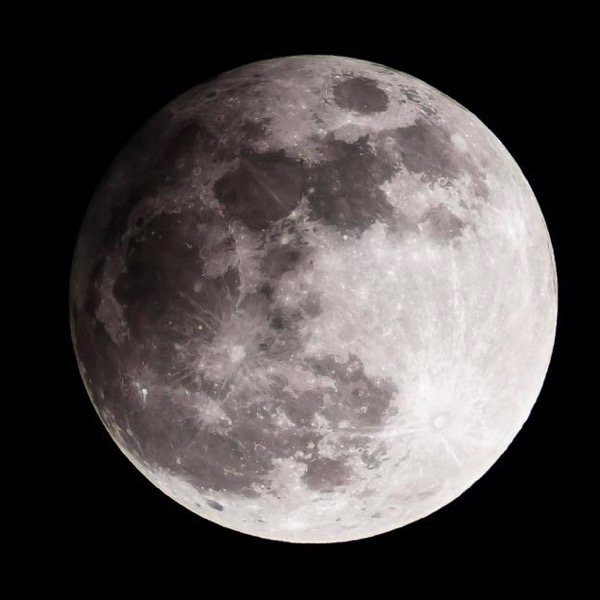
Observant people in North America and the Pacific will see a very, very subtle partial penumbral eclipse of the moon on the morning of March 23, 2016. The blazing planet Jupiter will be nearby. Western North America and Hawaii have the eclipse taking place in the nighttime sky from start to finish.
Other regions having all or part of the eclipse going on while the moon is above the horizon include much of Asia, Australia, New Zealand, much of South America, the Caribbean, Indian Ocean, the Arctic and Antarctica. If you live in Asia, Australia or New Zealand, the eclipse happens on the evening of March 23.
The moon will look plenty full as it lights up the eastern sky at nightfall March 22, but it’ll actually be a waxing gibbous moon. The moon turns precisely full on March 23 at 12:01 Universal Time. At U.S. time zones, that translates to 8:01 a.m. EDT, 7:01 a.m. CDT, 6:01 a.m. MDT and 5:01 a.m. PDT.
If you’re on the nighttime side of the world when the moon turns full, you might notice the very faint penumbral shadow of the Earth falling on the southern portion of the moon’s disk, as illustrated below.
From all time zones in contiguous North America, you’ll want to look for the eclipse shortly before dawn breaks.
Read more: What is a penumbral eclipse of the moon?.
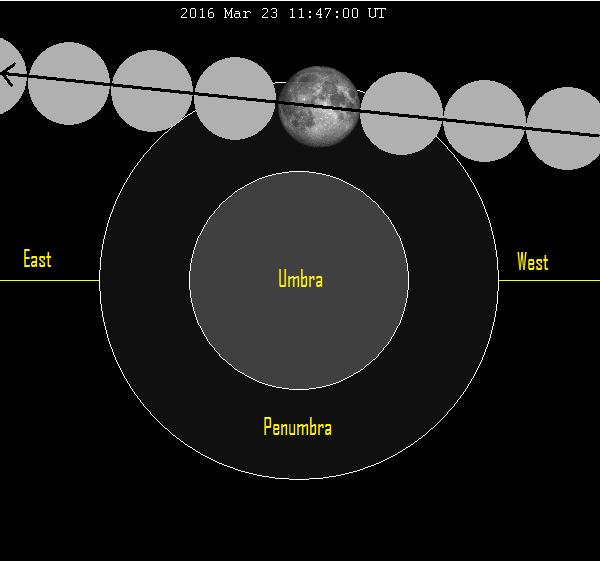
We give you fair warning, however. You may not detect any shadow on the moon, even if you’re viewing it at the moment of its deepest eclipse on March 23 at 11:47 Universal Time (4:47 a.m. Pacific Daylight Time).
That’s because a penumbral eclipse is a very subtle kind of eclipse.
Observant people will notice the shadow!
Others will stand looking at it and say they can’t see it at all.

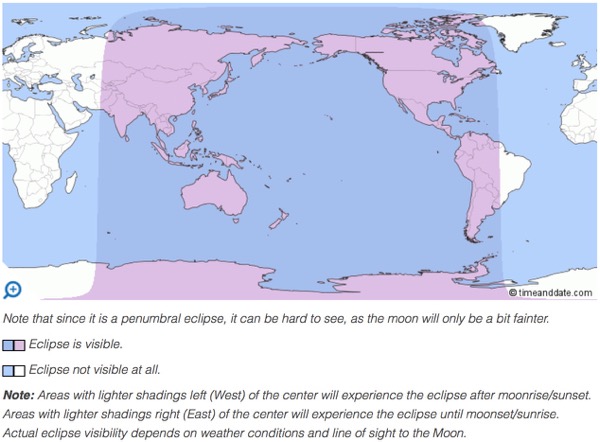
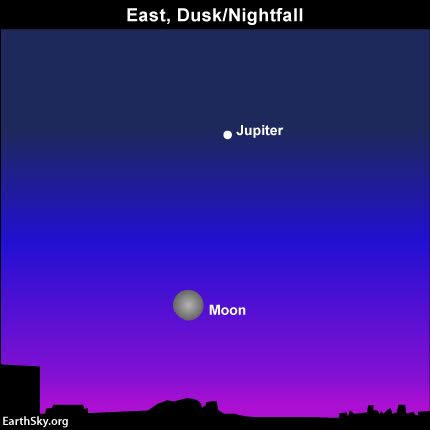

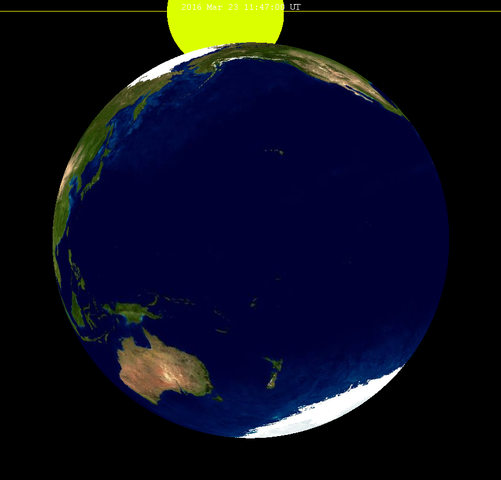
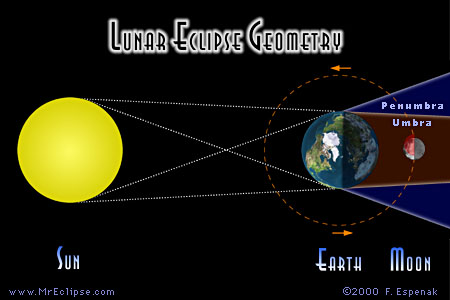
We recently had a lunar tetrad – four total lunar eclipses in a row, separated by six lunar months (full moons) – during the years 2014-2015. Now, we’re having four lunar eclipses in a row that are not total lunar eclipses.
Although every year has at least two lunar eclipses, both of this year’s lunar eclipses are penumbral.
Next year, in 2017, the first of two lunar eclipses will be penumbral and the second partial. The next total lunar eclipse won’t be until the Blue Moon of January 31, 2018.
In the 21st century (2001 to 2100), we have a total of 8 lunar tetrads – four total lunar eclipses in a row, with no partial or penumbral lunar eclipses in between. After each lunar tetrad, there are at least 4 lunar eclipses in a row that AREN’T total, so I guess we’re now paying our dues.
It is also possible to have four penumbral lunar eclipses in a row, with no other kind of lunar eclipse in between. This last happened in the years 2001-2002, and will happen next in the years 2030-2031. And, in 2085, we find four penumbral lunar eclipses happening in one calendar year.
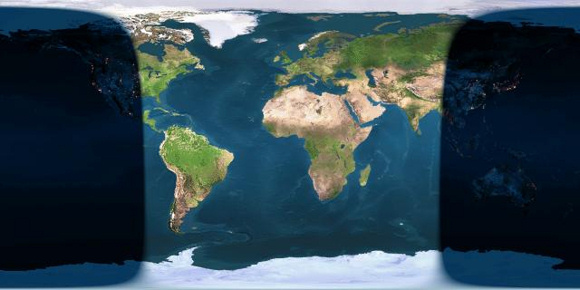
Bottom line: Although every year has at least two lunar eclipses, both lunar eclipses in 2016 are faint penumbral eclipses. The penumbral eclipse of March 23, 2016 – visible in its entirety from western North America – will be very subtle. Other regions seeing all or part of the eclipse include much of Asia, Australia, much of South America, the Atlantic, Indian Ocean, the Arctic and Antarctica.











